Easy DIY Hot Air Balloon You Can Fly at Home: How to Make a Mini Hot Air Balloon in 15 Minutes (A Simple Experiment to Learn About Buoyancy)

Have you ever dreamt of soaring through the sky in a giant hot air balloon, traveling wherever the wind takes you? I haven’t been able to make that dream a reality yet, but during a trip to Hokkaido, I happened to look up and saw a breathtaking sight: a sky filled with colorful hot air balloons rising one after another. That beautiful view, as if it had jumped right out of a picture book, is still etched in my memory.
Carrying that inspiration with me, I decided one day to turn the dream of flight into a hands-on project with my students in a science class. Of course, we weren’t going to build a giant balloon that could carry people. We decided to create a mini hot air balloon that anyone could easily make at home. The reason a hot air balloon floats is due to the principle of “buoyancy,” a topic that often comes up in high school physics and university thermodynamics. We wanted to go beyond just learning about this profound scientific principle from a textbook; we wanted to feel its incredible power firsthand by actually launching a balloon ourselves.
You might think that launching a balloon sounds difficult, but don’t worry! This experiment is surprisingly simple. With just a few common materials and a little bit of creativity, anyone can easily experience the buoyancy of a hot air balloon and the thrill of watching it rise into the sky. Based on a video we used for reference, I’ll walk you through the entire process, from how to make this mini hot air balloon to the exciting moment of launching it.
Now, let’s use the power of science to make the dream of flight a reality!
Science Recipe: Launch a Hot Air Balloon with Everyday Materials!
The materials for this experiment are all easy to find at a hardware store, supermarket, or pharmacy. For safety, be sure to perform this experiment with an adult.
Materials
- 40-liter garbage bag (thin, transparent, or translucent): This will be the main body of your balloon. Choose a lightweight, heat-resistant material if possible.
- Clear tape: Used to secure the parts.
- Enameled wire (40 cm x 4 pieces): This will form the framework to hang the gondola. It should be heat-resistant and easy to work with.
- Dropper: Used to measure the ethanol and soak the cotton ball.
- Ethanol: This will be your fuel. Disinfecting ethanol from a pharmacy is fine. Since it is highly flammable, handle it with extreme caution.
- Lighter: Used to ignite the fuel.
- Cotton ball: This will soak up the ethanol to act as the fuel.
- Aluminum foil (25 cm x 25 cm): Used to create the gondola (combustion tray) to hold the fuel.
- Nippers: Used to cut the enameled wire.
- Toothpick (or a thin stick): Used to poke holes in the aluminum foil.

Experiment Procedure
1. Make the Gondola (Combustion Dish) with Aluminum Foil
Using a 25 cm x 25 cm square of aluminum foil, create a small box-shaped gondola. This will serve as the combustion dish to hold the cotton ball fuel.
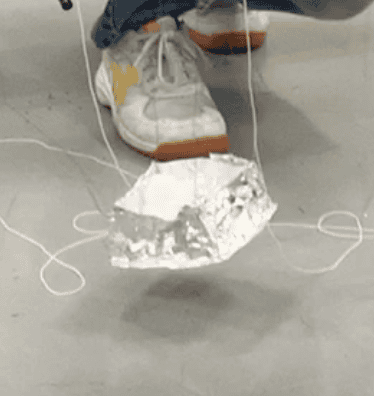
2. Thread the Enameled Wire Through the Gondola
Use a toothpick or a thin stick to poke small holes in the four corners of the gondola you just made. Thread one 40 cm piece of enameled wire through each hole and twist the ends together underneath the gondola to secure them. Do not use tape here. It could melt when you ignite the fuel later.
3. Attach the Wires to the Garbage Bag
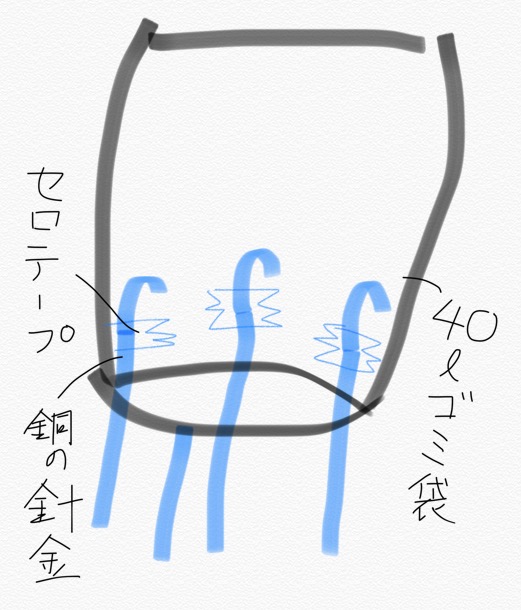
Use tape to securely attach the other end of the enameled wires to the four corners of the garbage bag’s opening. Make sure to adjust the wire lengths so that the gondola hangs level directly underneath the center of the bag. This creates the balloon’s frame and keeps the gondola stable.
4. Set the Fuel in the Gondola
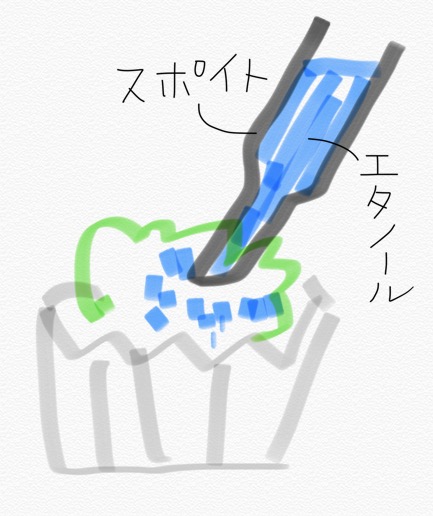
Place the cotton ball inside the gondola. Use the dropper to soak it with ethanol. We used 8 mL (in two 4 mL portions). Be careful not to use too much ethanol, as it can cause a longer burn time or an excessively strong flame.
5. The Moment of Launch! Don’t Forget the Lifeline!
Before you launch, be sure to have a wet rag ready to extinguish the flame if needed. Always perform this experiment with an adult. The launch location should be indoors, on a non-flammable floor. Make sure there is no wind by turning off any fans or ventilation.
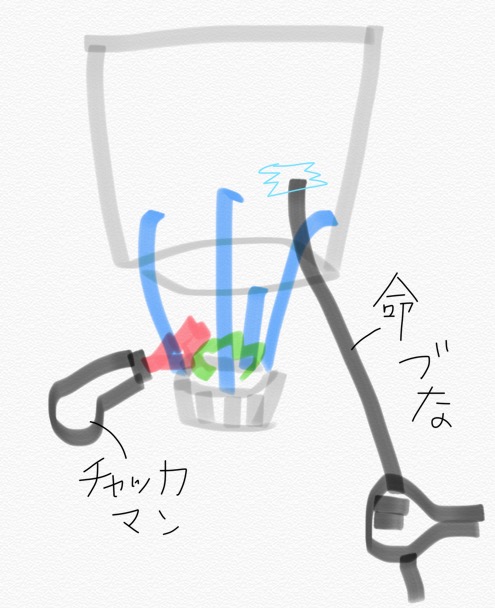
With one person holding the mouth of the garbage bag wide open, light the cotton ball with the lighter. As the ethanol begins to burn, the air inside the bag will heat up and the bag will start to inflate.
When it feels like the balloon is about to float, the person holding the opening should slowly release it.
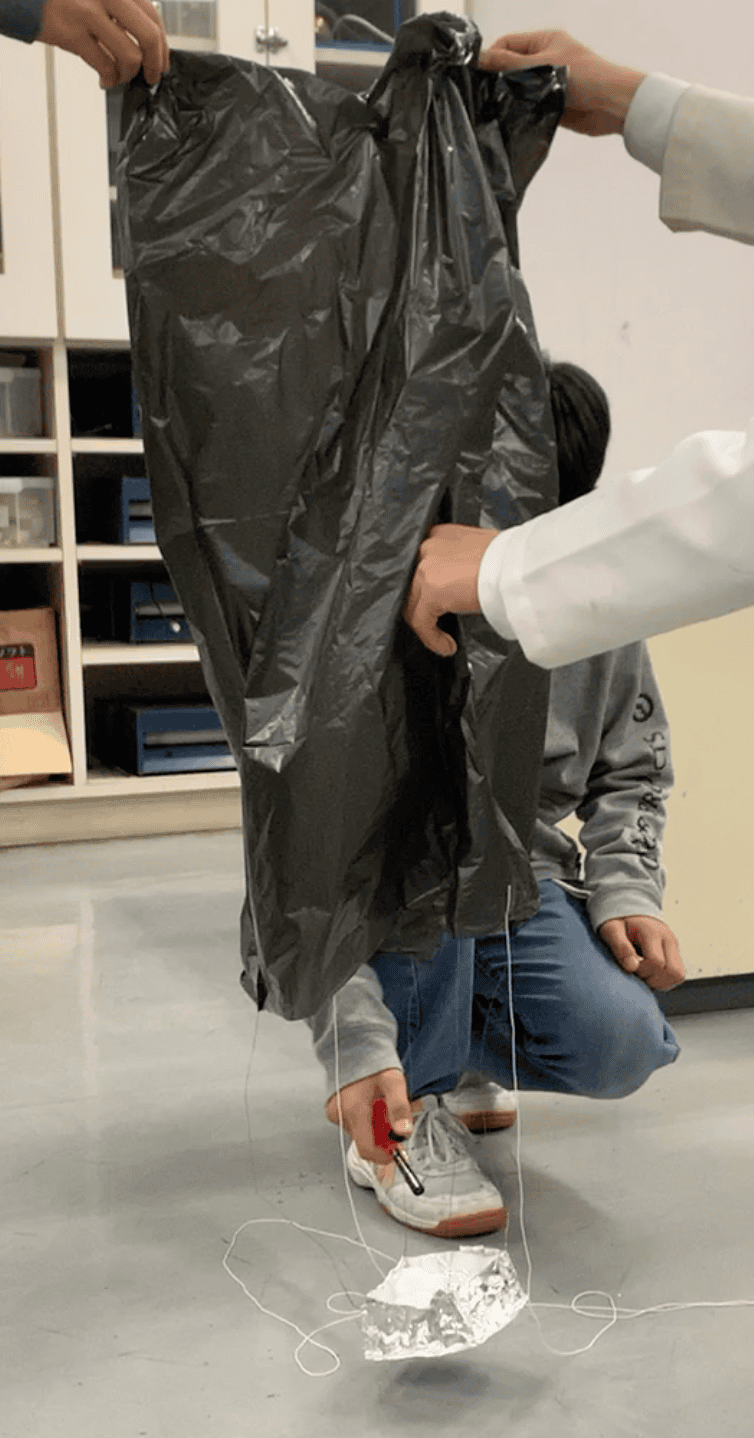
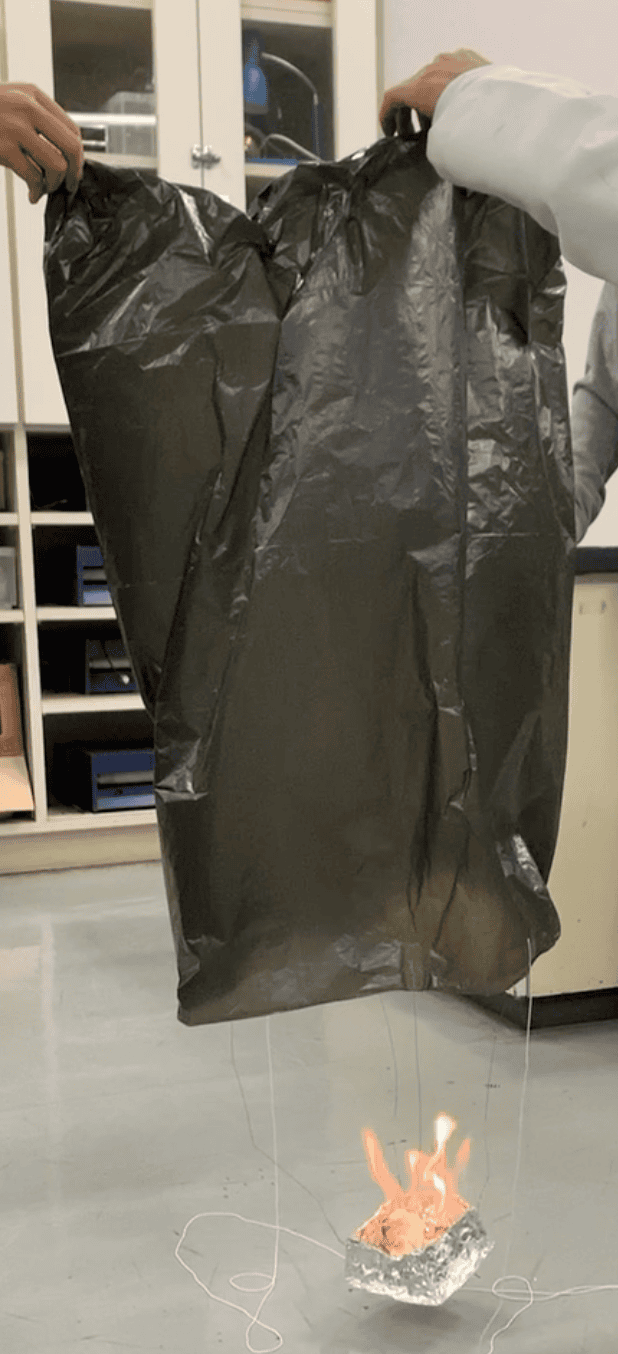
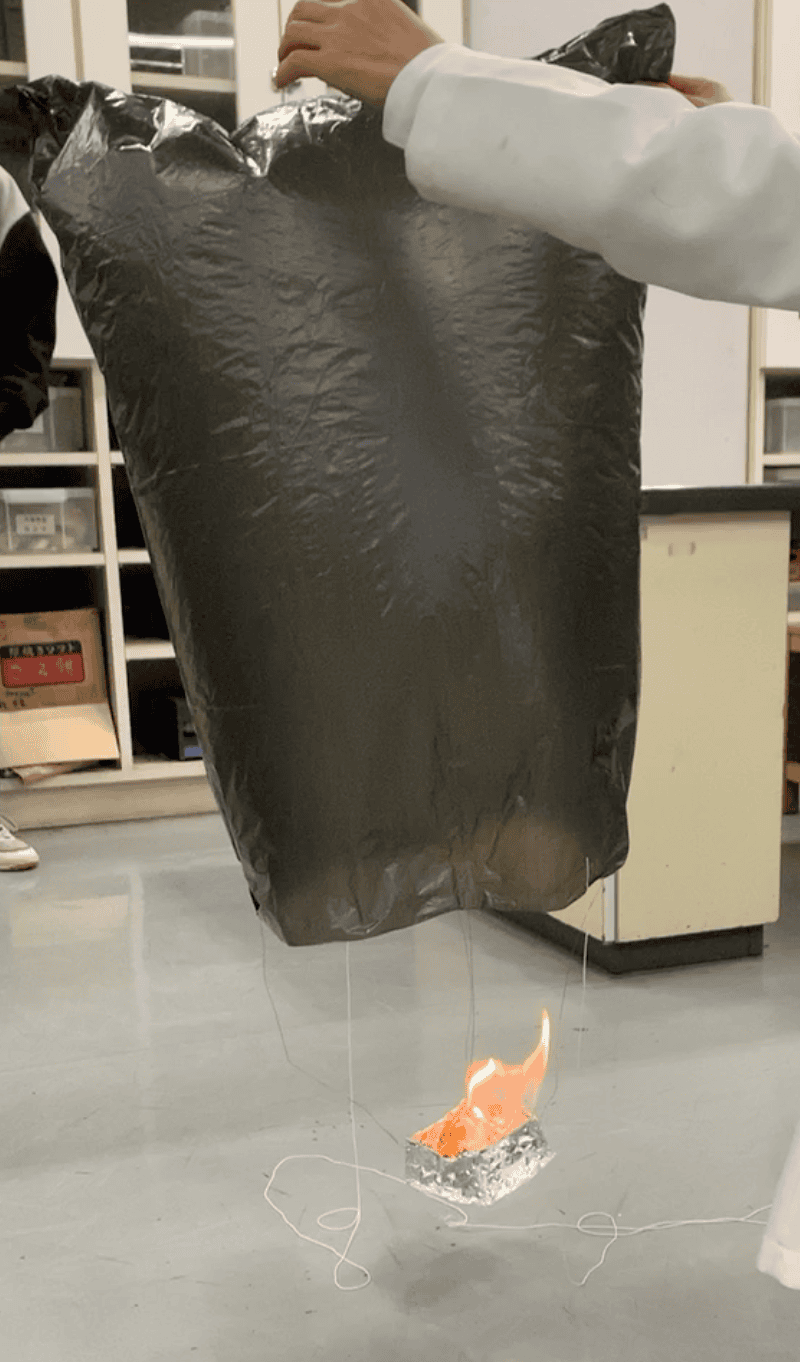
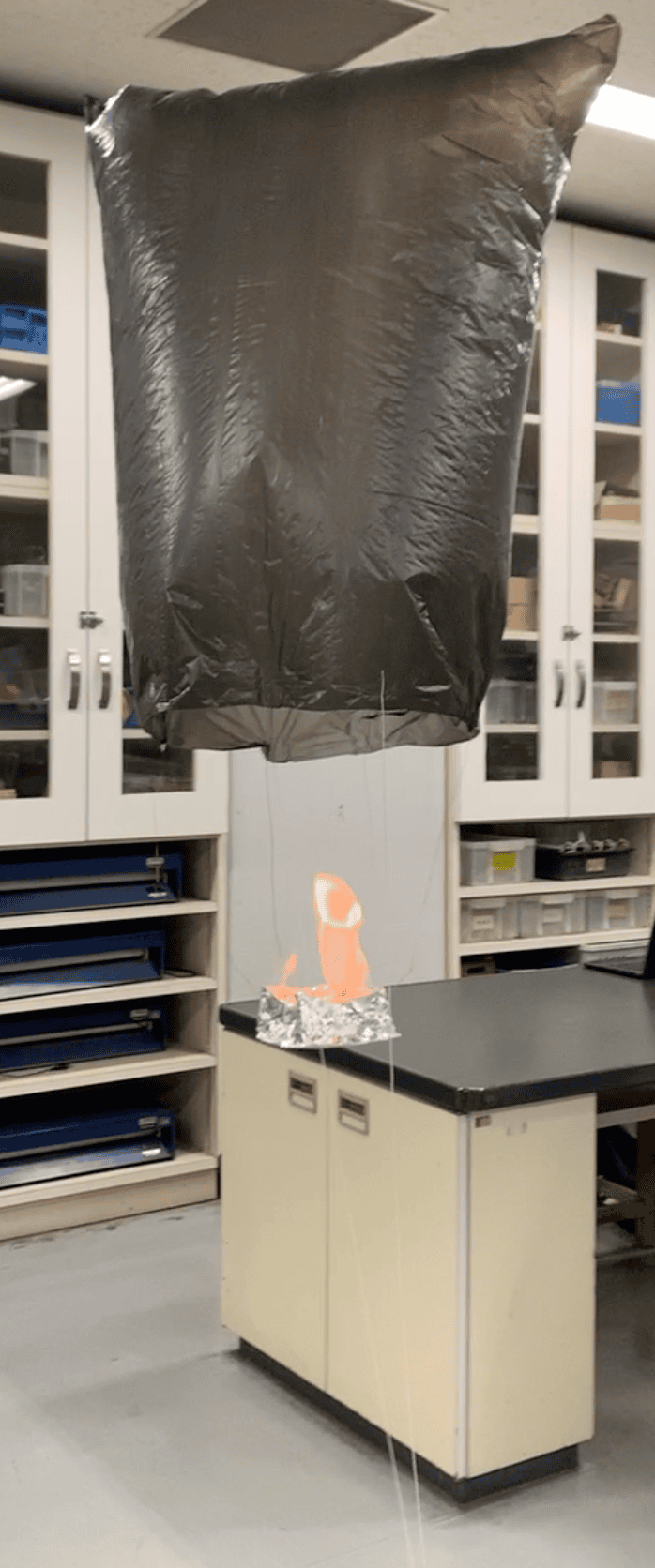
Make sure you always have a “lifeline” attached to the mini hot air balloon for control. If the flame gets too close to the bag or if the balloon tilts and seems unsafe, immediately pull the lifeline to retrieve the balloon and use the wet rag you prepared to smother the fire.
When the balloon floats gently upwards, you’ll surely hear a big cheer! It’s a moment when you can truly feel the buoyancy created by the warm air becoming lighter than the surrounding air. We hope you get to share this exciting experience with your children at home.


